Thinking Out Loud - An Interview with History
Once in a while, I'm reminded how lucky I've been.
I recently found a huge bunch of text files I’d generated going almost all the way back to my first article in June of 1969 (Air Progress). What follows is an article from 1971 in which I was interviewing, Eric Hartmann, the highest scoring ace in the world. 352 accredited kills. At the time, he was just turning 50 and I had yet to turn 30. Seen from where we are today, the small age difference seems just short of amazing. When I was doing the interview, WWII had been over only 26 years during which time he had spent 10 years in Russian captivity and 15 years with the new Luftwaffe before being forced out because of him voicing his dislike for the way the post war German Air Force was being managed. It’s interesting to re-read these words so long after they were typed but the facts are still interesting and of value. Bear in mind that this was 54 years ago, but the weekend lives in my mind as if I experience it last week. You’ll hear him speaking some thoughts and philosophies that are worth heeding today.
The Ace of Aces Speaks
His words came slowly, not because of the language difference but because he is a precise man with exact thought and he was searching for the right words. “My memorandum to the leaders of the free world are this: Never engage in a war if you don’t want to win it.”
The war against Communism, he said, should be ideological, and killing people never kills ideas. “Stop immediately any kind of conventional warfare, then get your prisoners out and save the lives of your youth.” He had much more to say concerning the problems of disengagement.
Same man, different time, different place. At this altitude, the sky is hard ice blue, and the earth’s curvature just begins to show. Suddenly, the outline of a Yak fills his gunsight and overflows onto his windscreen. As the collision appears unavoidable, guns roar, and he swerves past the flaming wreckage of yet another Russian airplane. He had applied his skill only on the Eastern Front and this scene was replayed an incredible 352 times (That included seven American airmen), making this man the undisputed ace of aces. That is Erich Hartmann.


When the war was over he was only 23 years old. When he was released by the Russians, he became part of the new German air force and loved the F-86 and F-106 but hated the F-104.
A total of 33,984 Bf 109s were built during WW II. Only the Russian Ilushin IL-2 (36,183 in four years) and the Cessna 172 (over 45,000 in 69 years) out number it. Credit: John Dibbs
When you consider the magnitude of Hartmann‘s feats, for years he was little known outside his native Germany. Only now is the rest of the world becoming aware of him. Part of the reason for the general obscurity of German aces is the tendency for those outside Germany to scoff at their high kill records. There is a widespread misconception that these tallies were inflated for propaganda, when in fact, they were probably more correct than many of our own. The German system of confirmation required that the kill actually be seen to crash by at least one person other than the pilot. Considering the German method of confirmation, there can be little doubt that Erich Hartmann had many more than 352 kills.
The cockpit of a 109 is very tight compared to most Allied cockpits, especially birds like the P-51 which is huge by comparison. Also, there was usually a huge gun sight taking up most of the windshield and framing all around the canopy (until the newer “Galland hood” came out) making visibility terrible. The big hump on the floor between the pilot’s feet covers the cannon’s receiver.
He flew 1,404 combat missions and participated in aerial combat on 825 separate occasions. During his career, Hartmann was forced to crash-land his fighter 16 times either because of mechanical failure or damage received from hitting parts of enemy aircraft he had shot down. He was never shot down by direct enemy action
Who is Erich Hartmann, the man? I had often wondered, and my chance to find out came last year (1971, remember?) at Baron Volkmer‘s P-51 Tournament at East Alton, Illinois. Hartmann had been invited to attend and I spent a leisurely day and a half with him, just batting the breeze as two pilots will do.
He came toward me in the lobby with the walk of an athlete. He is a lean, quick compact-looking man, a little shorter than average. His blond hair is beginning to darken, but with his face masked by sunglasses, it is hard to guess his age. He removed his glasses as he saw me, and it was evident that his famous boyish features have begun to mature. The inevitable crow’s-feet were at the corners of his eyes, and his tight, but friendly smile has left permanent creases. Though no longer a boy, he has somehow delayed middle age. But it was easy to see why 30 years ago he had earned the nickname “Bubi” (boy) from his fellow fighter pilots.
I grasped his right hand, acutely aware that this was a man who had pushed the button to down hundreds of his enemies, and had flown airplanes from the Bf 109 and the Me 262 jet to the F-104, F-106, etc. This was also the man who had performed this same handshaking ritual with Adolph Hitler on no less than three occasions.
In many ways, it was strange to meet Hartmann. I had read his biography, The Blonde Knight of Germany, and many of the more important events of his life were well known to me. I made it a point not to dwell on what I already knew. I wanted to talk pilot to pilot. And we did. We exchanged opinions on wine, war, women and airplanes.
One thing became evident very quickly: Erich Hartmann is his own man. Apparently, his 10 1/2 years in a Russian prison camp gave him plenty of time to explore his own mind. His look and conversation are both very direct. He draws a direct conversational line to his personal conclusions, with no tangents or apologies. At first it would be easy to construe this simplicity as a lack of facility in a foreign language, when in fact, it’s the way of a man who knows what he thinks and isn’t afraid to say it.
Only a small handful of original Bf 109s are still flying although there are a number of the Spanish CASA built versions with Merlins rather than Daimler-Benz engines. The Military Aviation Museum in Virginia Beach, VA, flies theirs regularly. Credit: MAM
He originally learned to fly from, of all people, his mother, who ran a glider school. He was only in his teens when he began cadet flight training, and military life was hard for this free-thinking individual. But he wanted to fly, and for the sake of flying he could endure anything. He soloed a BT-NB trainer in March, 1941, and the next year stepped up to the airplane that would be his mount for the duration, the Messerschmitt Bf 109.
His early flight career was not without incident. He was asked to ferry a Junkers JU-87 Stuka to the front, while on the way to report to his first group. He hopped into the unfamiliar aircraft and started for the runway, only to discover that the airplane had no brakes. He ran into the wooden control tower, felling it like a tree—an ignoble beginning for the ace of aces.
Over bacon and eggs, the subject of the FW-190 came up, and I asked him to compare it with the Bf 109. Explaining that he had a lot more time in the Messerschmitt than the Focke-Wulf, so he couldn’t really make a fair comparison, he nevertheless was very adamant that the 109, especially the later G series, was a superior dogfighter to the 190. You could suck into a tight turn with the Messerschmitt and just keep pulling. The slats would pop out and the airplane would start buffeting, but it would still keep flying. The FW-190, however, exhibited high-speed stall/tuck tendencies.
Hartmann said you would pull in tight with the Focke-Wulf and it would stall and do a half snap with almost no warning. On the other hand, what made the FW such a sweetheart, was its wide gear. The Germans lost a large number of 109s in takeoff and landing accidents because of the narrow gear, marginal brakes, the tremendous horsepower and the lower level of training as the war progressed. The FW 190 was easy to handle, and that made it a favorite among the younger pilots. He talked about “younger pilots,” forgetting he was only 23 years old when the war ended.
Hartmann was always at odds with brass hats, both during the war and afterward in the post-war German air force. When he was still beginning his career as a Luftwaffe ace, he disagreed violently with the way green pilots were being sent out in bad weather, resulting in many deaths. He became so enraged over the senseless waste that he wrote an irate letter, berating Hitler himself. Fortunately, an aide intercepted it, or Germany might never have known one of their greatest heroes.
All of Hartmann’s combat experience was on the eastern front against Russians, which he admits was one of the reasons he was so successful. One of the major characteristics of a fighter pilot, he says, is an aggressive spirit. He has to be looking for the fight and be eager to mix it up when he finds it. The Russian fighter pilot, according to Hartmann, lacked the will to fight. Also, many Russian fighter pilots had a farming background and weren’t geared to operating fighters. We sometimes fail to realize that in Russia, the industrial revolution had yet to affect the general population, so even the simplest mechanical act was foreign to them. For this reason, they had a difficult time adjusting to aerial warfare. However, this doesn’t mean that every Russian pilot was a sitting duck. Actually, they had some highly skilled and experienced pilots.
The Planes of Fame’s Bf 109G was never allowed to become a derelict. It didn’t need complete restoration so it is a pristine example of what the Luftwaffe flew.
Most of his adversaries were flying Yaks, Laggs, American P-39s and P-63s, a few Mustangs, and the Sturmovik ground-support machine. Of these, the Sturmovik was the hardest to knock down because it was heavily armored. Hartmann said he often could see his tracers ricocheting off the Sturmovik’s armor plate while it kept flying. He said that the P-39 was easy to outmaneuver and shoot down, but it allowed no margin for mistakes. The P-39 had a 37mm cannon firing through the spinner and it took only one lucky shot to knock an airplane out of the sky. Few Mustangs made it to the eastern front and Hartmann did combat with them only five times, so he declined comment. But he knocked down approximately seven of them.
Hartmann was very well known on both sides of the battle lines. He was the tool of the German propagandists who made the most out of the scoring competition between the top scoring aces, Hartmann and Gerhard Barkhorn,who had 301 victories. Hartmann was personally decorated by Hitler three times. He was one of only nine airmen to win the Knight‘s Cross with Oak Leaves, Swords, and Diamonds.
The Russians began to take note of Hartmann when he painted his Bf 109 with a distinctive black scalloped nose. He became known as the “Black Devil,” but the paint job proved a disadvantage, since he couldn’t even get close to the Russians, if they saw him coming. He then started giving this airplane to new combat pilots; they couldn’t have asked for better life insurance. When the Russians saw the black-nosed Messerschmitt, they left.
One reason for his astounding success as a fighter pilot was his tactics. In Hartmann’s terms, there are basically two kinds of fighter pilots: “head“ flyers and “muscle” flyers. The “head” pilots plan the actual attack and depend primarily upon strategy rather than pure dog-fighting. The “muscle” fighter, on the other hand, falls back on WW-I dog-fighting tactics and depends upon pure skill and the ability to outmaneuver the enemy.
An early model Bf 109 ready for battle. They didn’t start using belly tanks until they found the airplane didn’t have enough fuel to fly some place, like across the English Channel, and get into more than about a half hour of dog fights and still make it home.
Although Hartmann was capable of either kind of flying, he chose to be a “head” pilot. He worked out a precise method from which he tried never to deviate: see, decide, attack, reverse. He‘d find the enemy, maneuver into a position to make one reasonably safe high-speed pass, and then split. In most cases, one pass was all that was needed because another of his methods was to hold his fire until he was within 50 to 100 feet, (feet, not yards!), of his victim. At this range, the effects of the Messerschmitt‘s 8 and 20mm guns were devastating. It required only a short burst. The most vivid testimony of how close he would approach before firing is the how often parts flyig off his target aircraft damaged his airplane. He was practically leaving powder burns on them.
His tactics brought him through the war alive, but politics made him a war criminal and a prisoner. During the closing days of the war, when Germany’s defeat was obvious, his superiors ordered him to tell his troops to retreat and then to climb into his Messerschmitt and fly back toward the western front. This way, he would be sure to be captured by the advancing Americans rather than the Russians. The bad blood between the Germans and the Russians was far deeper than just a war. It was a bitter hatred fed by propaganda ministries on both sides, with each side in morbid fear of capture by the other. Hartmann refused to leave his group and stayed with them to help with retreat preparations.
Actually, his group was captured by Americans, but because of a prior Allied agreement, all Germans who fought on the eastern front were to be turned over to Russia. After a two-week period of detention by the Americans, Hartmann was turned over to the Russians and his new war started.
Russia was going to rebuild East Germany in its own image, but it needed the help of Germans. Especially heroes who would be of great propaganda value. They tried Hartman in a kangaroo court and found him to be an “enemy of the people,” but they were willing to make a “deal” if he’d come over to their way of thinking. Erich Hartmann is a German and his own man, so the Russians were talking to a stone wall. Hartmann repeatedly fought the prison camp commandants to the point that it was a simple choice of Hartmann getting his way, or the commandant shooting him on the spot. It was the classic prisoner/captor confrontation seen so often in the movies, but this wasn’t the movies.
Today, Hartmann scoffs at the term “brainwashing.“ He said the Russians didn’t use brainwashing, only starvation. When you are facing starvation, he said, and someone else holds the key to food, you find your will crumples quickly. He freely expressed his shame and disgust at the hundreds of German generals he saw yield to the Russians so quickly, but he says he really can’t blame them. The generals didn‘t actually have to fight the war, so they hadn‘t learned to live with substandard conditions. When you‘re starving, all you think about is food, he says; you soon look at everything in terms of food. Can I eat this, or what about that? He says brain-washing is completely unnecessary in this situation. Only the strong-willed survived intact, and Hartmann was determined to survive.
Only through the direct efforts of Chancellor Konrad Adenauer was Hartmann released from the Russian prison ten years after his capture and reunited with his wife, Usch, whom he had married just before the war‘s end. . Back in West Germany, he naturally gravitated back into the military and was given the task of raising Germany‘s first post-war jet fighter wing, flying F-86s. One would think a man with Hartmann’s, war record would be accorded superior status, but he once again ran head on into political intrigue and personality clashes. The years in prison had hardened his will and self-discipline to the point that he made no effort to hide his feelings about bad decisions, which led to endless trouble in the new German air force.
Today, when he speaks of bad decisions, he invariably speaks of the “youngsters,“ 62 of them, who were killed flying American F-104s in the German air force. He says it wasn’t the airplane‘s fault, it was the fault of ambitious, politically minded generals who wanted to make the air force run before it could walk. Germans had flown nothing until the mid-’50s, when they started training in F-86s. From the Sabre, the high command wanted to step immediately into the supersonic F-104, a handful by any standards. Hartmann felt the pilots weren‘t ready for the airplane. He would rather have seen a transitional fighter, like the F-100 or F-102/106, used until German training techniques caught up. The 62 dead pilots are testimony to whose decision was followed.
On jet fighters, Harmann thinks the F-106 is one of the most underrated airplanes around. He express his admiration for the airplane’s overall performance and the good handling characteirstics that make it a true fighter.
We spent the day wandering up and down the rows of WWII fighters at East Alton, talking about his experiences. He stopped to joke with Bob Hoover, who spent the war in a German POW camp after being shot down, and talked with Peter Townsend, who had shot down a dozen German planes.
The war is over now, and these men are part of a homogenous group that knows no borders. They share a common bond. They were, and are, fighter pilots. Period! Hartmann bears no ill will toward anyone, even his Russian captors. He says they are just people with the same emotions and problems as everybody else; they just have different leaders.
Before we parted, I had to ask him one last question that had been on my mind. “Mr. Hartmann, if you could fly any airplane in the world, what would be your choice?”
I don’t know what I expected, but I didn‘t anticipate his answer. He turned to me, his eyes took on that light, alert look they get when his mouth twists into a grin and he said, “I would really like to fly a Breezy!“
You just gotta love him for that comment alone! bd


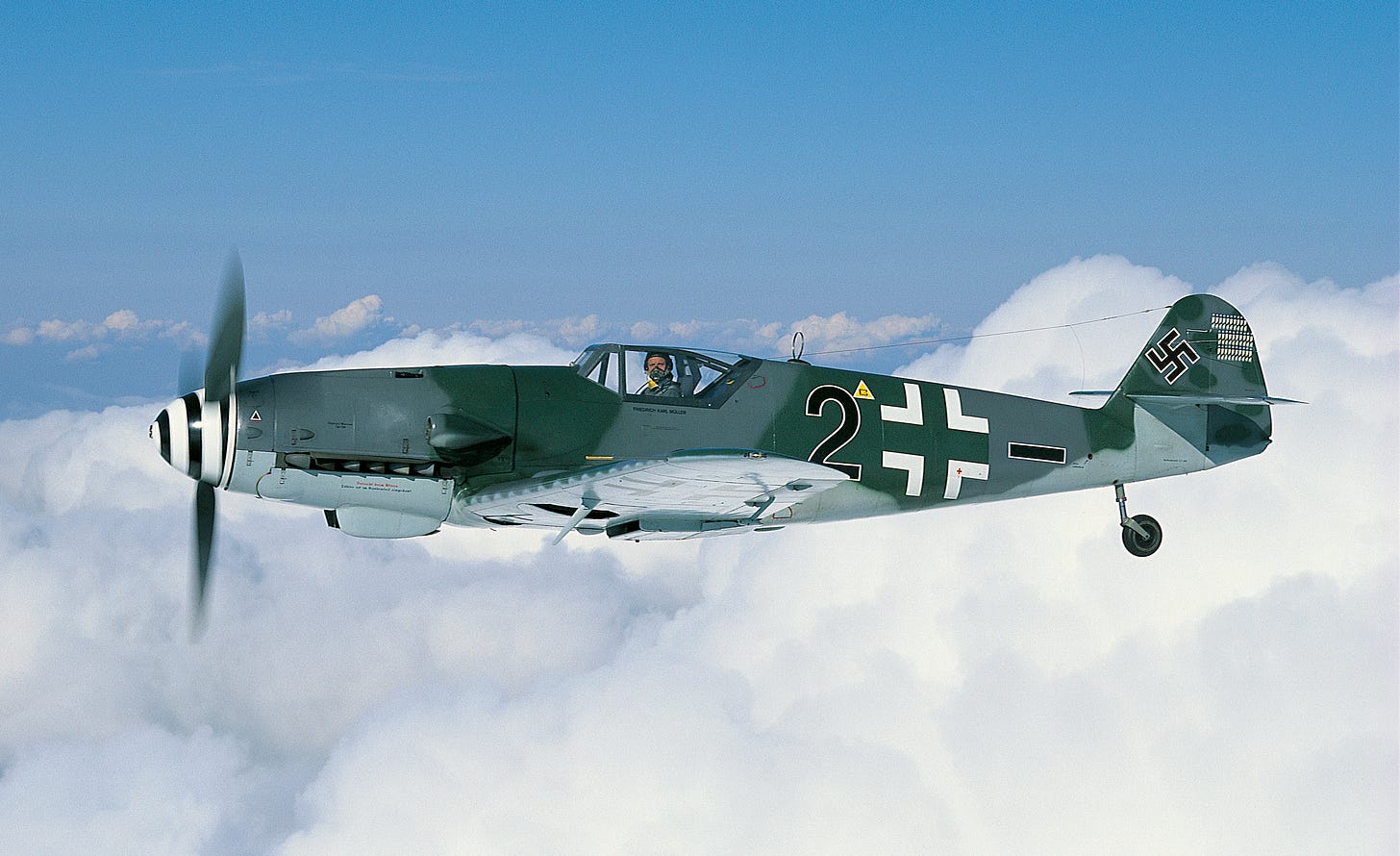
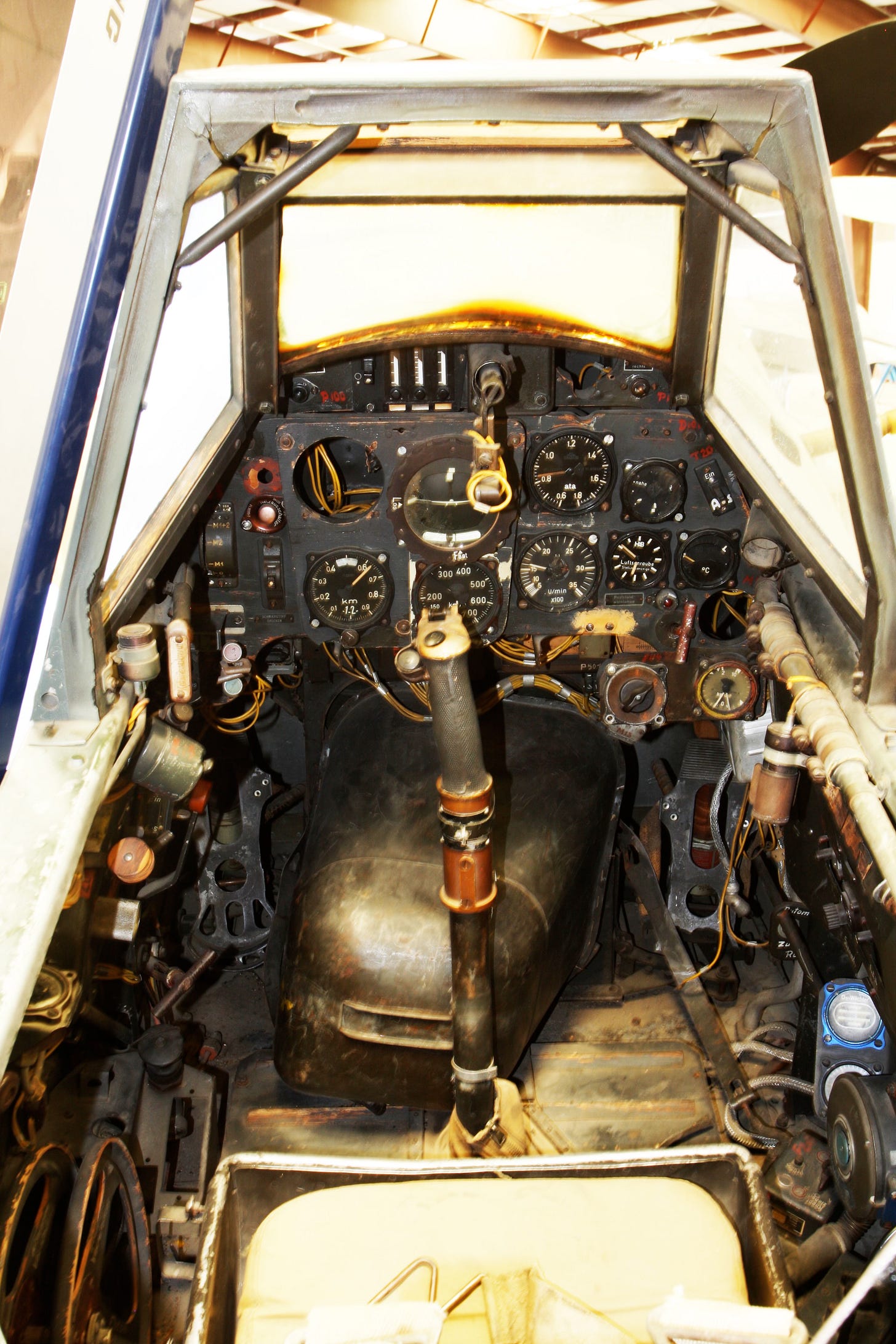
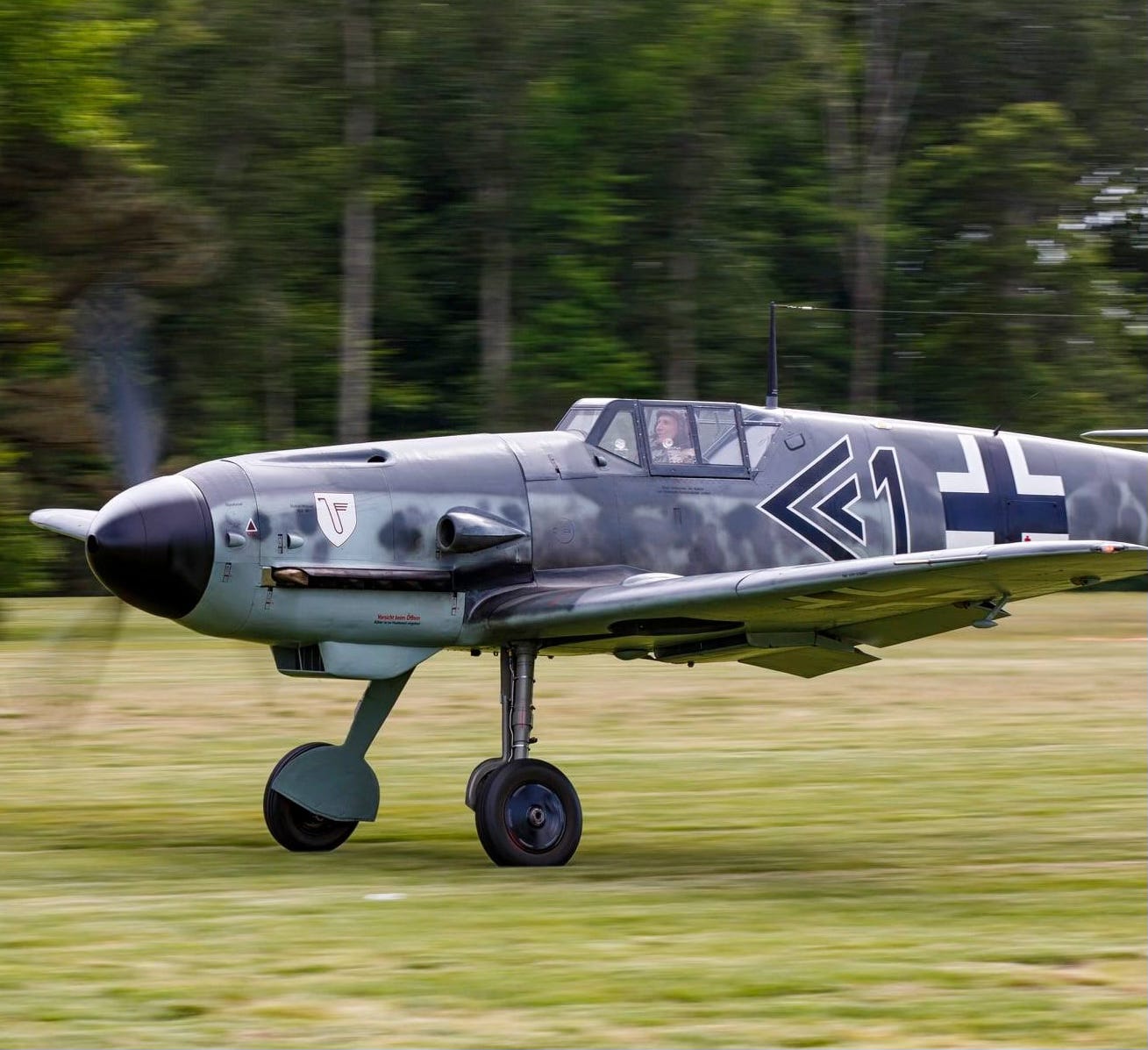
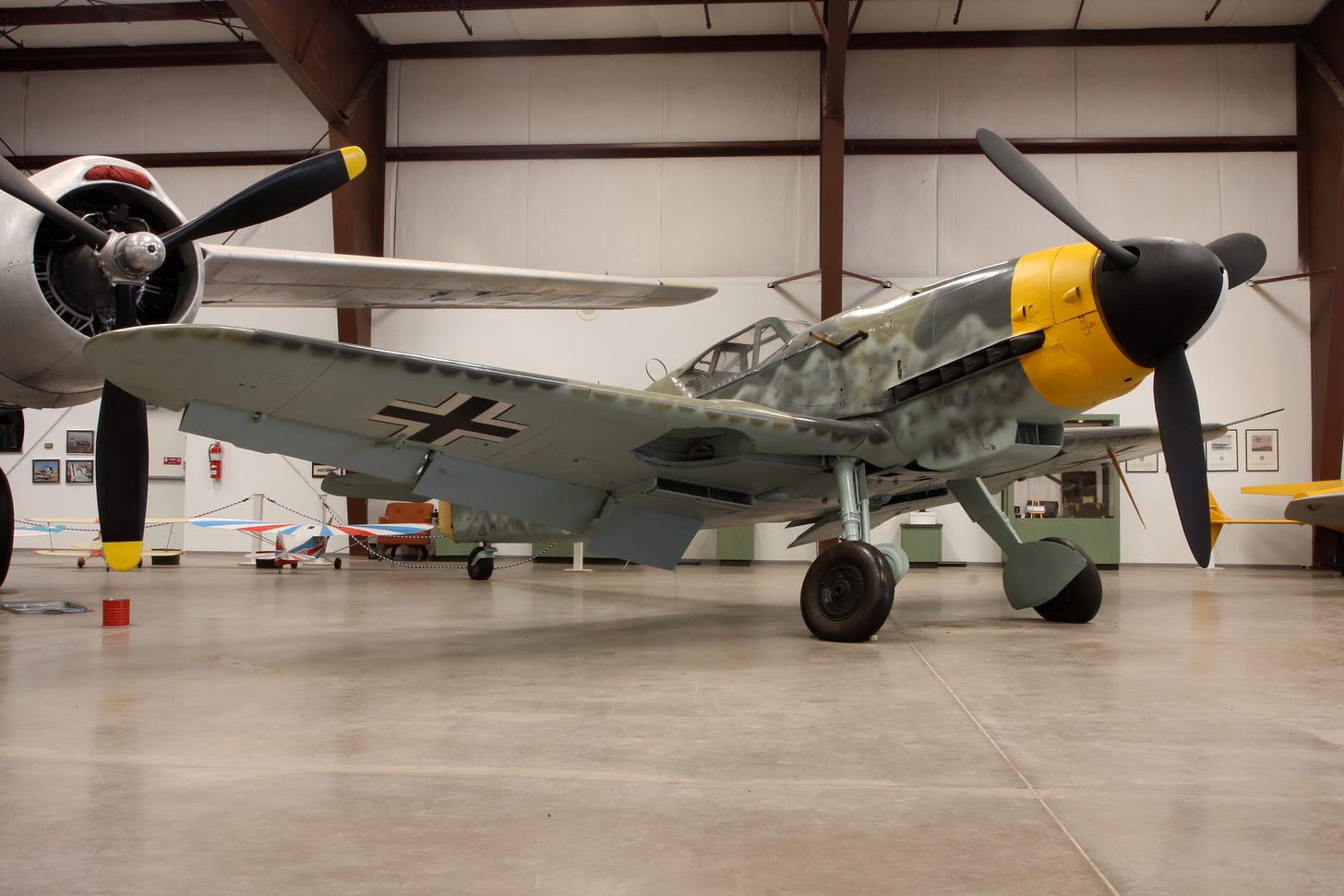
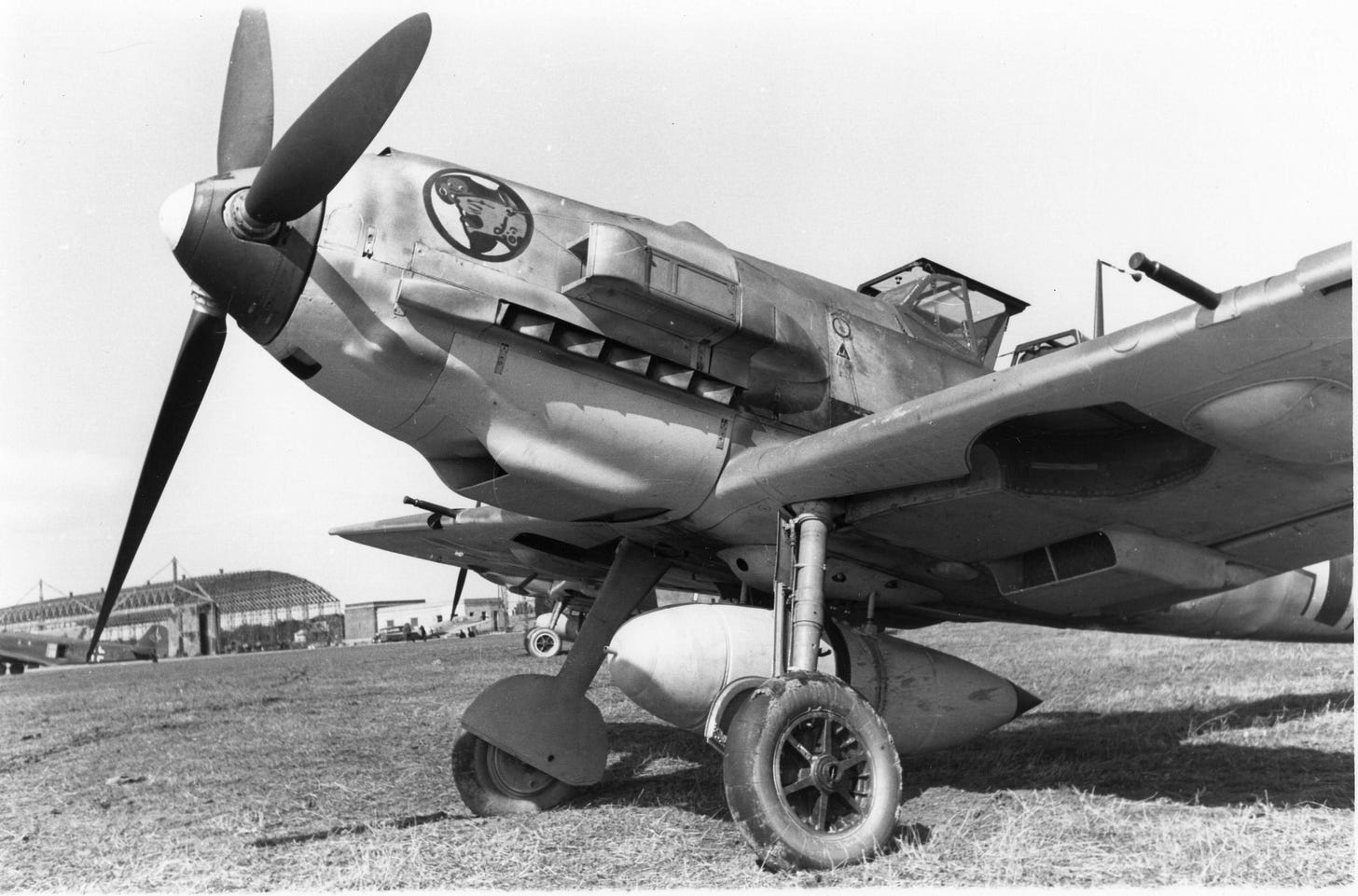
You were lucky to meet and spend time with Eric Hartmann. I know that some would disparage his record number of kills, because they were on the Eastern Front, but in air combat, all it takes is one mistake at the wrong time and place, and that pilot is a part of the opponent's tally. He definitely was his own man.
The really good pilots that I've met, don't brag. They don't have to. They know what they have done, and their record doesn't need any personal glorification.
This is also the 68th anniversary of the launching of Sputnik. I was a 12 year old in the 7th grade. It's considered the start of the space age.
I love this article. My brother married Pappy Boyington's granddaughter, my uncles served in WWII in both the Army and Navy in both theaters, my childhood neighbor was a Naval Aviator... for Japan, and I met some old men is small villages when I was stationed in Germany back in the 90's that had most likely shot at my uncles. They were all just Soldiers doing what they thought was right based on what their leadership told them to do. The real bad guys were far removed from these brave young men. I have also talked with former Iraqi Soldiers and feel no animosity. They were young men shooting back at those that were shooting at them just like I was. We both like fishing, cool cars, and our kids...